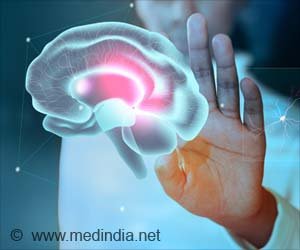The Lab-Brain Repairs Damaged Brain

Researchers in the United States have demonstrated that brain tissue put into adult rats can integrate with the animals’ neurons, increasing the possibility that cerebral transplants will be able to repair damage caused by head injury or disease. “Neural tissues can reconstruct regions of the wounded brain,” said Isaac Chen, the study’s principal author at the University of Pennsylvania, adding that the implants assisted rats in recognizing light patterns in the visual cortex.
“This is an excellent first step.” The Penn researchers transformed human stem cells into brain organoids, which are neuronal structures a few millimeters wide with many of the characteristics of real brains and have emerged as one of the most active research areas in neuroscience.
What is Organoid?
Organoids are stem cell-derived, small, self-organized, three-dimensional tissue cultures. Such cultures can be designed to reproduce much of an organ’s complexity or to express specific features of it, such as producing only certain types of cells.
Advertisement
Organoids develop from stem cells, which can proliferate endlessly and produce a variety of cell types as part of their progeny. Scientists have discovered how to establish the ideal environment for stem cells so that they can self-organize following their genetic instructions, generating small structures that resemble miniature organs made up of several kinds of cells. Organoids range in size from less than a hair’s breadth to five millimeters (2✔ ✔Trusted Source
Organoids: A new window into disease, development and discovery
Go to source
).
Implanted Organoids
The organoids were implanted in the brains of rats whose visual cortexthe portion responsible for processing visual information from the eyeshad been partially removed. Human organoids successfully integrated into the rat brain within three months, sharing its blood supply, expanding in size and quantity, and making connections with the host neurons. To prevent the animals’ immune systems from rejecting the human tissues, the researchers subdued their immune systems. The next step of the Penn study program will look into the ability of organoids to grow in areas other than the visual cortex of adults. “We also want to understand the factors that guide the integration process so that we can adjust the composition of the organoid and aspects of the host brain to make them integrate as well as possible,” said Chen.
The experiment’s fluorescent tracing techniques revealed continuing neural connections from the rats’ retinas to the organoid. The activity of individual human neurons was then recorded using small probes, while the animals were exposed to flashing lights and patterns of alternating black and white bars.
“We saw that a good number of neurons within the organoid responded to specific orientations of light, which gives us evidence that these organoid neurons were able not just to integrate with the visual system, but they were able to adopt very specific functions of the visual cortex,” Chen said.
The researchers were taken aback by the rapid neuronal integration within the adult brain, which bodes well for future medical treatments such as correcting damage caused by strokes or serious head injuries. Previous research found that implanting human brain tissue into newborn mice, whose developing brains create a biochemical environment more favorable to neuronal growth, resulted in rapid and successful integration. “Our work shows that the adult brain is still adaptable enough to integrate new tissue,” said Chen. “One day we will be able to exploit that to develop procedures for patients.”
Clinicians may take skin cells from a brain-injured patient, transform them into stem cells with a biochemical cocktail, and then control their maturation into a brain organoid over a few weeks. This would then be transplanted into the wounded or damaged part of the brain. However, this approach would be time-consuming and costly for healthcare professionals. “A more reasonable approach could be patient-matched tissue, where there is a library of stem cells and off-the-shelf tissue that match the immune signature of a patient so that immunosuppressant drugs are not needed,” said Chen.
References :
- Structural and functional integration of human forebrain organoids with the injured adult rat visual system – (https://www.cell.com/cell-stem-cell/fulltext/S1934-5909(23)00004-8)
- Organoids: A new window into disease, development and discovery – (https://hsci.harvard.edu/organoids)
Source: Medindia
Source link
#LabBrain #Repairs #Damaged #Brain



